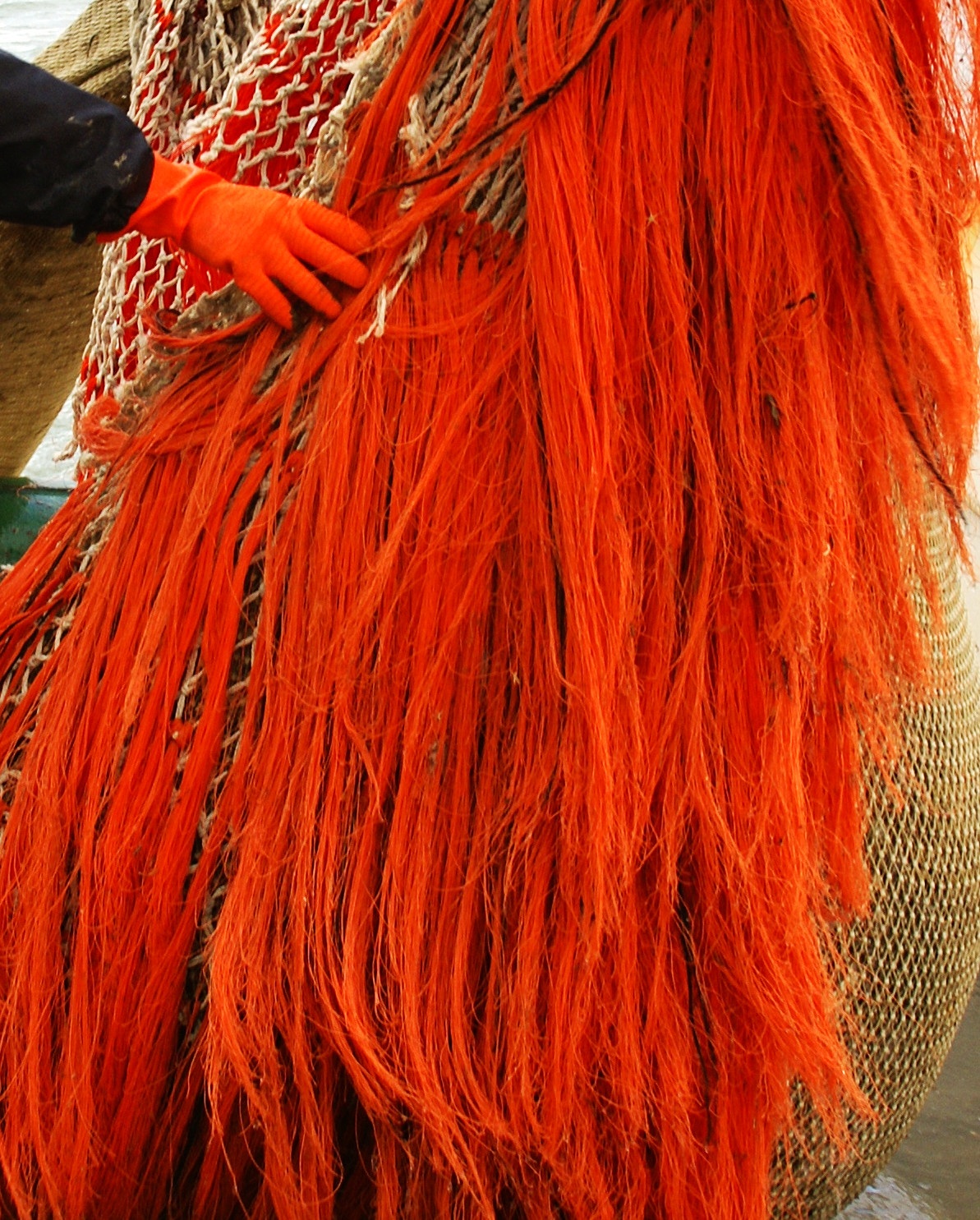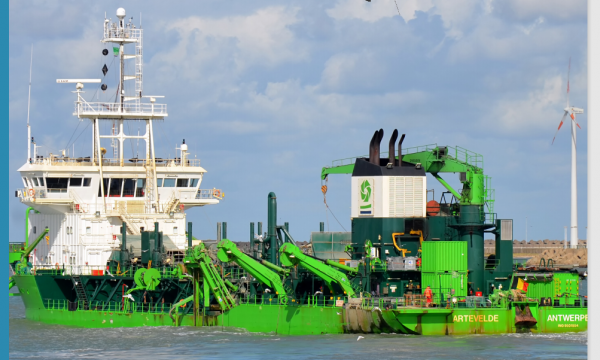Press release Plastic pollution in the Belgian North Sea: no alarming amounts of microplastics in fish and shellfish, plastic fibers everywhere and a hotspot near Zeebrugge
More than three quarters of all waste in the Belgian North Sea consists of macroplastics (larger particles of plastic waste), and this is a major source of pollution, especially in the coastal zone. Plastic fibers, mostly from dolly rope (plastic fibers attached to trawling nets), can be found everywhere, even at a distance from the coast. Smaller plastic particles or microplastics of >50 µm (one-twentieth of a mm) also appear to turn up much more frequently along the coastal strip and in ports than further out to sea. This has all been shown by a systematic monitoring study in the Belgian North Sea. Through the MarinePlastics research project, scientists now have the necessary input to set up a macro- and microplastics monitoring plan for the Belgian part of the North Sea, a European obligation.
In the fishing grounds where Belgian fishermen are active, ILVO and KBIN researchers have examined commercial fish species and crustaceans for microplastics. There, the numbers are very low to absent. On the basis of this study, the researchers are already calling the fish and crustaceans from Belgian fisheries a safe food source as far as microplastic pollution is concerned.

ILVO and the Royal Belgian Institute of Natural Sciences (KBIN), within the two-year EMFF/FIVA research project MarinePlastics, have mapped out how much and what types of plastic occur in Belgian fishing grounds. This involved both larger pieces of waste (macroplastics larger than 5 mm) and small to minuscule plastic particles (microplastics smaller than 5 mm). This research was not optional, but rather an obligation from Europe, which has been demanding since 2012 that every member state collect figures on macroplastics on the seabed. As of 2020, data must also be collected on microplastics in the sediment and in the water. The MarinePlastics project also examined the extent to which microplastics are present in the commercial fish and crustaceans from our fishing areas (North Sea, English Channel, Celtic Sea, Irish Sea). The researchers made a distinction between the plastic particles in the fish stomach (which people do not consume) and the fish fillet (which we do eat).
Belgian fish safe to eat
The results of this research are reassuring: it was found that microplastics >50 µm (this is one-twentieth of a mm; contamination with nanoplastics, i.e. even smaller particles, was not investigated in this project) do not accumulate in commercial fish and crustaceans sampled in fishing areas where Belgian fishermen are active. In almost all fish and crustacean samples (both edible and non-edible parts), the numbers of microplastics were so low that the concentration could not be precisely determined. In only 5 out of 42 fish fillets, 2-6 microplastic particles per 100 g of fish fillet were found, which is not alarming. Thus, the public may be informed that fish and crustaceans from Belgian fisheries are currently a safe food source in terms of microplastic contamination.

More microplastics close to ports and the coast
Still, concentrations of microplastics in the seabed and in seawater can sometimes be quite high, albeit variable. In this study, the concentration of microplastics in coastal sediments (near Zeebrugge) was about nine times higher than further out to sea. In seawater, the difference was even more spectacular: water from the port of Zeebrugge and near the coast contained 48 and 10 times more microplastics, respectively, compared to more seaward locations. Currently, there is no monitoring program that follows the evolution of this type of pollution in Belgium. In order to meet the European obligations, a national monitoring program for microplastics must therefore be set up. To this end, the researchers also recommend that the transport of microplastics in the marine environment, possible hotspots and the link with the spread of macro-waste be further investigated (or commissioned).
Karien De Cauwer, KBIN researcher: “This study gives us a good picture of the degree of microplastic pollution near the coast and further out to sea. Based on a good detection methodology, the evolution can be followed up according to European standards. This will allow to evaluate if measures and actions taken are effective. With more knowledge about locations where microplastics might accumulate, more targeted measurements can be taken.”
Plastic fibers from the fisheries
Large pieces of waste - macroplastics - make up 77 to 88% of all marine waste in terms of numbers. One item is apparently present everywhere: plastic fibers. The very light monofilaments of dolly rope - the mat of loose threads that are supposed to protect the belly of a trawling net from damage - is the main plastic item that is spread evenly across our part of the North Sea, even further offshore. Heavier plastics (such as crates, bottles and containers) are mainly found near the coast. Important detail: in the Dutch part of the North Sea, there is more pollution from plastic fibers than in the Belgian part. The researchers ask the policy and sector to make it a top priority to find and implement a good biodegradable alternative to plastic dolly rope. Obviously, this not only concerns the Belgian fishing industry, but initiatives should be taken at the scale of the entire North Sea or even Europe.

Route for plastic pollution?
While there may be a link between plastic pollution and fishing, there is no unequivocal causal relationship with fishing intensity. In other words, most litter is not necessarily found in places with most intensive fishing. Nor was a direct link found with sand mining or offshore wind farms. A hotspot of waste was identified at one dredging site, near the port of Zeebrugge. However, it remains unclear whether this is due to the dumping itself, or due to currents or other driving forces. A detailed study of marine litter hotspots is therefore needed, examining the impact of different sources and modeling the transport processes of litter.
Bavo De Witte, ILVO researcher: “In our turbulent North Sea, it is not surprising that sea currents can exert a strong influence on plastic pollution. Through modeling, it should be possible to learn even more about the origin of different waste types.”
The MarinePlastics research project was funded by the European Fund for Maritime Affairs and Fisheries and the Funding Instrument for the Flemish Fisheries.

The full reports can be downloaded via the following links:
Microplastics in seafood from Belgian fisheries areas - ILVO Vlaanderen
Distribution and sources of macrolitter on the seafloor of Belgian fisheries areas - ILVO Vlaanderen
Conclusions and recommendations of the project MarinePlastics - ILVO Vlaanderen & KBIN


